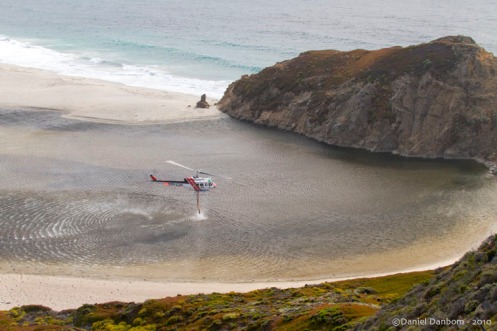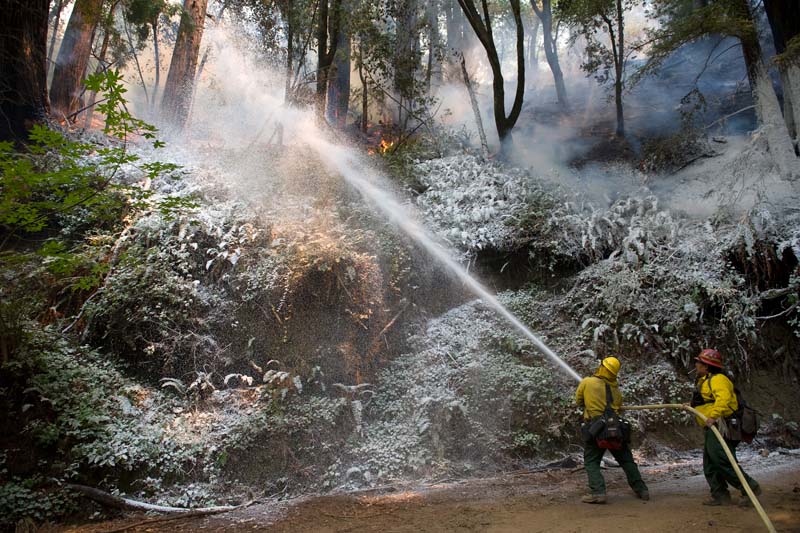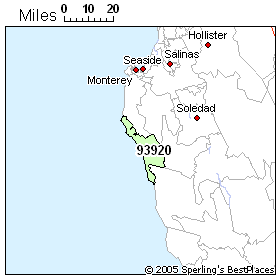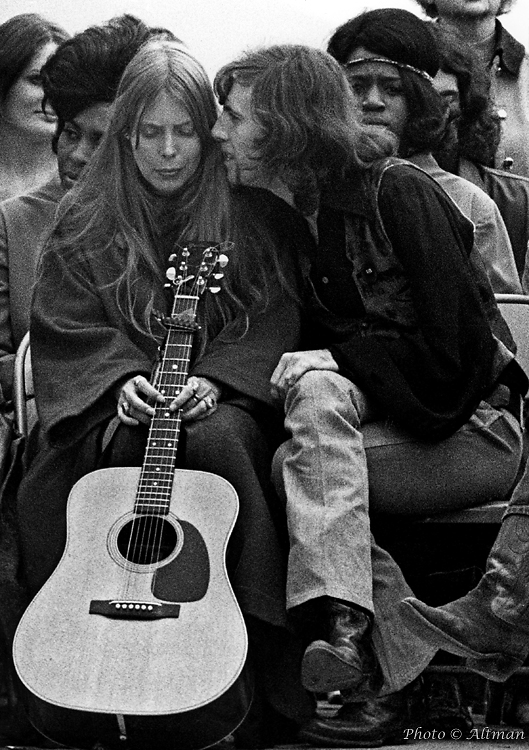The Agricultural Core's landscape compared to Big Sur, CA is completely different. The Agricultural Core includes Wisconson, Illonis, Indiana, Ohio, Missouri, and Iowa. Flat land is one of the biggest advantages for farmers in the agricultural core, whereas Big Sur has very rugged, steep, terrain. Big Sur is better suited for vineyards, rather then dairy or corn production. However, there are a few farms in the flat areas of Big Sur which produce dairy products such as milk and cheese, also, some farms have beef as well. Big Sur's agriculture is closely tied with its history as well as building surrounding communities.
The El Sur Ranch listed below provides dairy and beef for some of the markets in Monterey. Also, all the farms located near Big Sur help the surrounding communities with environmental and safety services.
Agricultural History / Legacy of El Sur Ranch, Big Sur
History - Past to Present

The El Sur Ranch was originally formed as one of several hundred ranchos created during the 1800s, in California’s Spanish-Mexican period. The El Sur grant was made in 1834 by Governor Jose Figueroa to Juan Bautista Alvarado. The ranch was managed and then assumed by Alvarado’s Uncle, Captain John Rogers Cooper. Early records indicate a 5-year contract signed in 1843, to lease El Sur to John Dye, a Kentucky native who used the ranch to raise mules. In the 1850s, El Sur was again leased to dairymen who milked cows and produced cheese for the Monterey market. Cooper himself, at this point, began to use the ranch to run his own herd of beef cattle.
Until the 1920s, Cooper and his descendents, who were to become some of the largest landowners in Monterey County, continued to use El Sur and its natural meadows for beef and dairy cattle and began experimenting with agriculture along the coastal plain, including artichokes and peas. In 1928 the ranch was bought by Harry Hunt. Through the 1930s, Hunt continued agricultural uses including alfalfa, barley, corn, potatoes and carrots. It was during this period that the first irrigation centrifugal pump-wells were installed.
The land was converted back to pasture and when electricity reached Big Sur in 1948, it had the potential to be irrigated. Hunt had constructed irrigation pipelines north of Big Sur River in the early 1950s. The pipes and valves laid out in 1950 are still used on El Sur Ranch today.
In 1955, Cortlandt Hill bought El Sur Ranch from Harry Hunt. Since 1955, the Hill family has retained the property and manages the land in a manner that preserves its historic pastoral beauty, much to the benefit of Big Sur’s many sightseers.
Legacy - A Heritage of Community, Culture and Conservation
El Sur Ranch, a family owned and historic California coastal ranching operation, has since its inception, recognized its responsibility to the spectacular coastline that defines its western most boundary. El Sur Ranch’s commitment to the preservation and protection of coastal ranching and its environs has also included its role as neighbor to those within the greater Big Sur community. Examples of the Ranch’s commitment have been and continue to include the Ranch’s leadership and participation in numerous community projects such as: implementation of tree re-planting and erosion-control programs, the removal of non-native, invasive plant species, as well as involvement in a variety of scientific environmental studies that have substantially improved our understanding of this diverse and spectacular environmental resource. Source: http://elsurranch.com/historyLegacy.html Driving to Big Sur there are many cattle farms...
Historic Property left by the Marks Family is the final piece in parkland legacy...
Carmel, CA – May 07, 2007
Located just 3.6 miles from the heart of Salinas, the Marks Ranch property features a classic Steinbeck country landscape – gently rolling hills dotted with coastal live oaks, open meadows bursting with spring wildflowers, dense grasslands and majestic sycamores.
Agricultural Soils
Compared to the agricultural soils of the Midwest, Big Sur has a vast variety of soil types with higher and lower acidity level.s Some of the soils in Big Sur are mixed with Adenostoma along with sandstone. Overall, Big Sur has a wide variety of soil types which support different plant communities. Some of the soils are limestone-derived , granitic, and metamorphic rocks- which all contribute to Big Sur's natural diversity.
Ericoid mycorrhizas are generally ascomycetes, occasionally a basidiomycetes will show up. They are the most advanced at extracting and holding Nitrogen and Phosphorus from organic matter. They have fair drought tolerance but do best when they are on the edge of constant moisture. You will find them on the edge of high elevation or high latitude bogs, under large conifers in heavy duff next to a water source, in very high rainfall acid soil areas, next to seeps on the north slopes in heavily forested areas. (Ericoid mycorrhizas are the exception in California Natives to our watering and planting regime. They love a lot of peat and other low nitrogen organic matter worked into the soil and put on as mulch.) These mycorrhizal plants can detoxify peat. You can tweak a site to make Ericoids happy and most other things die by providing moderate moisture and 50-70% peat moss for soil, with no fertilizer or other amendments. Make sure the plant is Ericoid before you do this, other plants will decline and die.
Some California sites with ericoid plants include: Ft. Bragg area on the acid plain mixed in with the Pines, sand; above Santa Cruz mixed in with the manzanita, sand; in Big Sur mixed in with Adenostoma (of all things), sandstone; in Los Osos mixed with manzanita, sand; in the Sierras in solid stands near seeps, north slope, 6500', loamy-clay. Adenostoma fasciculatum
IdentificationGenus: Adenostoma Species: fasciculatum Variety: NoneCultivar: None Common name: Chamise.
Click thumbnail to view larger image.
DescriptionChamise tends to be a medium to large shrub, 3-10 ft., tall. Native to the coast ranges (Mendocino and Lake County south to Baja) and Sierra Nevada mountains (From about Tehama County, south). a very tough plant. Used as a screen or as wind break, full sun, good drainage, erosion control, fire sensitive, can be made fairly fire resistant with a once/two week indirect watering. The Koso people used it for arrow points. The Luiseno people used it for the arrow foreshaft. Chamise Flowers sell well in the wholesale florist market. A trailing form of this plant is supposed to exist. So far, they do not trail when introduced to our heat. The trailing form doesn't have much vigor and will become upright if you let it. There are low forms in the wild growing in sand next to the coast and/or pruned regularly by Bambi, and the constant sea breezes. The full -sized form grows on both nursery sites and in our county in sand, clay, and gravel. In our area it is native to a rainfall range from 7-40 inches. Its name originates from the fascicled (clustered) leaves. Super, excellent erosion control plant. This plant is a major component of the chaparral and is holding the soil on the hillsides in California. Chamise also protects the soil after fires as it crown sprouts back from the base. A good understory plant that grows well under chamise, with a nice mulch of chamise leaves and twigs, is Viola pedunculata. Adenostema is the wrong spelling , Adenostoma is the right spelling. (Greek for the gland at the mouth of the calyx.)
CharacteristicsAdenostoma fasciculatum Chamise tolerates sand and clay.
Adenostoma fasciculatum Chamise is great for a bird garden.
Adenostoma fasciculatum Chamise's foliage color is lt-green and type is evergreen.
Adenostoma fasciculatum Chamise's flower color is white.
CommunitiesCommunities for Adenostoma fasciculatum Chamise:Chaparral and Coastal Sage Scrub.
Ranges for Adenostoma fasciculatum |
31102010The first rains of the season have fallen here in Big Sur and the data are rather surprising . . .

Another double acid rainbow in Big Sur
Other than the one large storm that hit last week most of the rainfall events in October were light. And they were the most acidic of any set of monthly readings since the start of the record in 2006. The rain pH of 4.1 measured on Oct 18 was the lowest pH observed in more than fours years of readings in Big Sur. The readings for Oct 23 (4.3), Oct 25 (4.4), and Oct 30 (4.4) were also unusually acidic. 
Rainfall amounts and pH in Big Sur - October 2010
I’m rather at a loss for explaining this. I don’t think it’s due to higher inputs of pollution. I wonder if ocean primary productivity of the California Current is still on the rise. If so, then the greater phytoplankton activity could be enhancing amounts of dimethyl sulfide (DMS), a major precursor to sulfuric acid in the air and rain over the oceans. The figure below, from a NOAA report “Climatic and Ecological Conditions in the California Current LME for July to September 2009“, indicates that, as of last year, the chlorophyll abundance, which is a fair indicator of primary productivity, has been on the rise in recent years.





 The El Sur Ranch was originally formed as one of several hundred ranchos created during the 1800s, in California’s Spanish-Mexican period. The El Sur grant was made in 1834 by Governor Jose Figueroa to Juan Bautista Alvarado. The ranch was managed and then assumed by Alvarado’s Uncle, Captain John Rogers Cooper. Early records indicate a 5-year contract signed in 1843, to lease El Sur to John Dye, a Kentucky native who used the ranch to raise mules. In the 1850s, El Sur was again leased to dairymen who milked cows and produced cheese for the Monterey market. Cooper himself, at this point, began to use the ranch to run his own herd of beef cattle.
The El Sur Ranch was originally formed as one of several hundred ranchos created during the 1800s, in California’s Spanish-Mexican period. The El Sur grant was made in 1834 by Governor Jose Figueroa to Juan Bautista Alvarado. The ranch was managed and then assumed by Alvarado’s Uncle, Captain John Rogers Cooper. Early records indicate a 5-year contract signed in 1843, to lease El Sur to John Dye, a Kentucky native who used the ranch to raise mules. In the 1850s, El Sur was again leased to dairymen who milked cows and produced cheese for the Monterey market. Cooper himself, at this point, began to use the ranch to run his own herd of beef cattle.
























